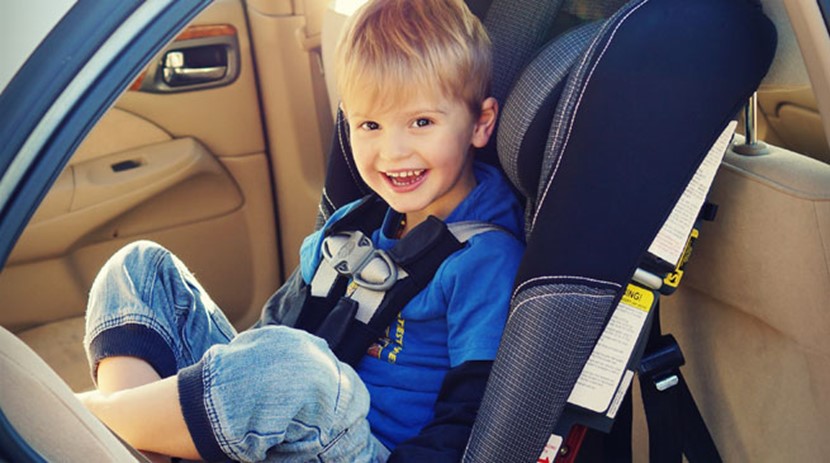5 tips for carseat safety

Carseats can be a confusing business - once you finally worked out which seat to buy, you then have to install it correctly! Treasured Cargo are carseat technicians based in Palmerston North and they are passionate about keeping your treasured cargo safe and secure when travelling in vehicles. They believe that the more informed people are about car seats, the safer our children will be. Here they share with OHbaby! their top tips for keeping kids safe in cars.
1. Rear face your child for as long as possible. It is scientifically proven to be over 500% safer for a child to remain rear facing to at least two years of age, but ideally four years old. A young child’s vertebrae are not fully hardened/closed until they are around age four. Their necks and spines are especially vulnerable since their heads are approx 25% of their body weight. If a young child is forward facing too early they have a 75% higher chance of death. This is due to their heavy head getting thrown forward with such force that their delicate spinal cord can stretch and break. This can be fatal and is rarely survivable. A rear-facing seat supports your child’s head and neck, keeping them aligned and removing the risk of a broken neck. Rear facing is truly the safest thing you can do for your child. You can read more on rear-facing carseats here.
2. Do your research on carseats BEFORE you buy. In New Zealand we accept three different safety standards of seats (EU, AUS, US). Some will last a lot longer than others and they all install differently (It’s confusing, we know!). Go for a seat with the highest height/weight limits you can afford, so your child will remain safer for longer. Not all seats fit in all cars. Some seats will need a long seatbelt to install correctly so please try a seat in your car before you buy it. The safest thing for your child is to rear face until they are two to four years old, then forward face with a harness until five years old at least. Look for a seat capable of doing this as not all seats available here will be suitable for rear facing for that long.
3. Be careful with booster seats. Once your child has outgrown their harness limit, the next step is a booster (or another seat with a higher harness limit). A booster is a safe option IF the child fits the booster's limits AND can sit properly 100% of the time. Most children don’t have the maturity to sit correctly for the whole ride until they are at least five years old. If your child is in a booster and wiggles, slouches, pulls arms out or leans over, he/she is NOT READY for a booster seat. A poorly positioned adult seat belt can kill a young child. When you keep your child harnessed YOU are in control of their safety, but in a booster, THEY are in control. Some seats available here will easily harness to five to eight years of age. Please do your research.
4. Keep kids in a carseat or booster until they are 148cms tall. New Zealand law says a child must be in a carseat/booster until they are seven (or eight if one is available) but this is the bare minimum as far as safety is concerned. A child has to fit correctly in an adult seatbelt before they can travel safely without a car seat/booster. Most children are 10 years or older before they fit correctly. A full booster offers side/head protection and proper belt placement. Please use one until they are old/tall enough to be safe in only a seatbelt. A half booster is a good option for those older kids that still need a little lift (half boosters are best for eight years and older, but not young kids).
5. Use and install your seat correctly. Installing a carseat can be a complicated job (we know this, that’s why we’re here!). Read your manual and follow the directions exactly. Not doing this is illegal and can be incredibly dangerous for your child. Your seat should always be solidly installed with less than one-inch side-to-side movement at the belt path (where the seatbelt goes through). If it has a top tether, use it as per instructions (some seats MUST be tethered at all times). The harness should always be snug against your child’s body and if your seat has a chest clip, it should always be at armpit level. Check your manual for specifics about shoulder height, crotch buckle position and precautions.
And remember:
- NEVER use a seat that is expired or damaged.
- Please don’t use an accessory/insert that didn’t come with your carseat. It wasn’t crash tested or approved for use.
- Kids are safest in the BACK SEAT. Airbags have killed kids, so keep kids in the back until they are at least 12 years old.
- The back middle seat is the safest position in the car. Put your child’s seat there if it’s compatible with the type of belt and it fits.
Our children are beautiful and irreplaceable so let’s make sure they are as safe as possible every single time they travel. Informed Parents = Safer Kids!
Published with thanks to Treasured Cargo. Find them at facebook.com/TreasuredCargoNZ

